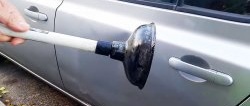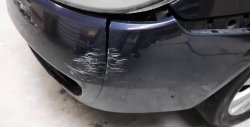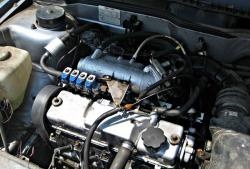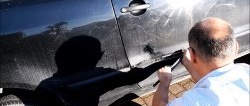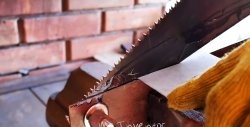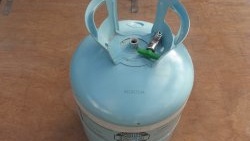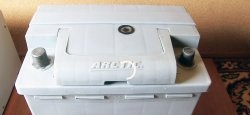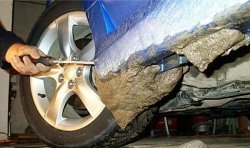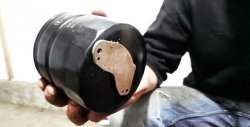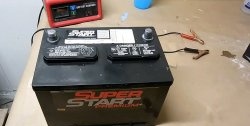Transforming an old car into a stylish one
Sometimes this happens: there is no free money in the family budget, and the appearance of the car urgently requires close attention. What should a cash-strapped owner of an old car do? Do the repairs yourself! Straighten dents, update bumpers, apply protection to parts in contact with negative external influences, and turn “saffron marks” and scratches into an airbrush design. By spending a minimum of money, maximum time and effort, you can achieve a professional result.
Materials for work:
Stages of work:
First stage: preparing the car.
We rinse our favorite car with water. We apply the detergent thoroughly, wash it, dry it and put it indoors.
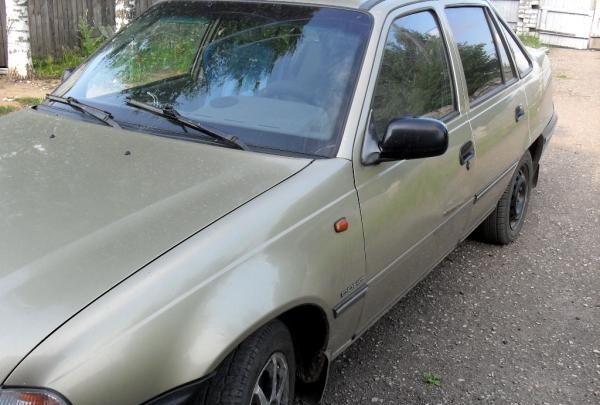
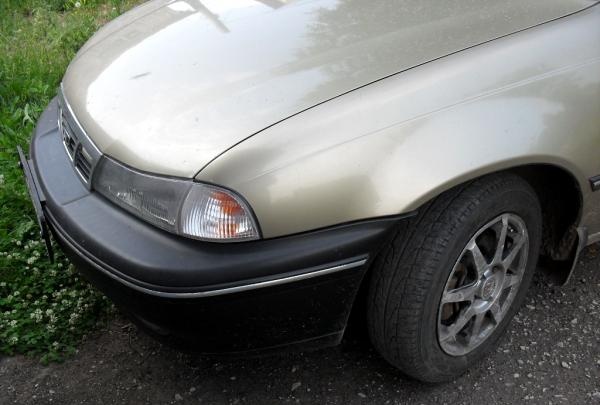
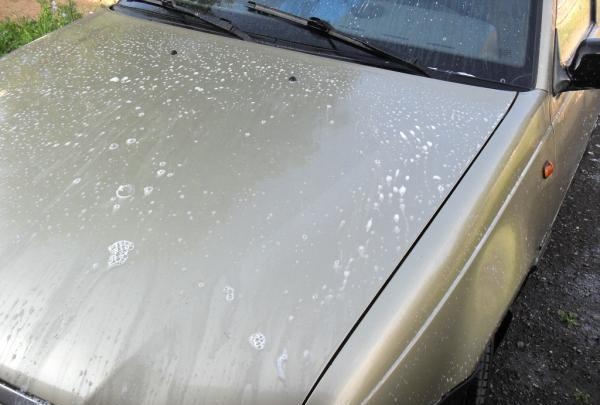
We rent rooms. We wrap all parts not involved in painting in protection. You can use anything, but the fastest and most convenient way is to attach garbage bags with masking tape: they are easy to attach and remove, and have a large coverage area.
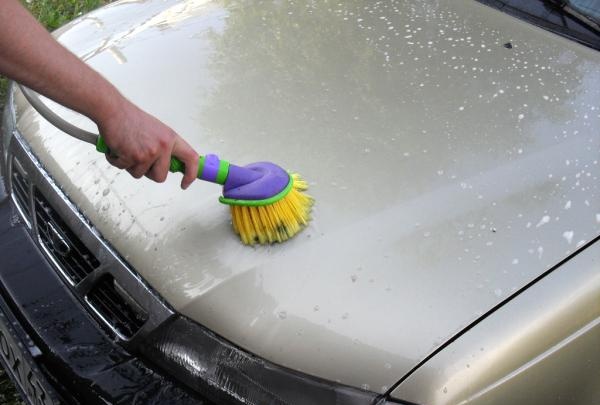
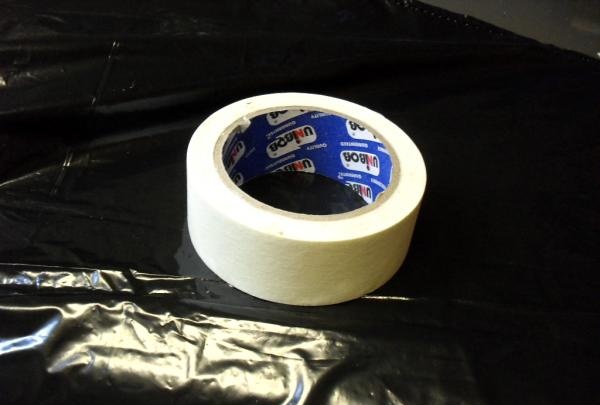
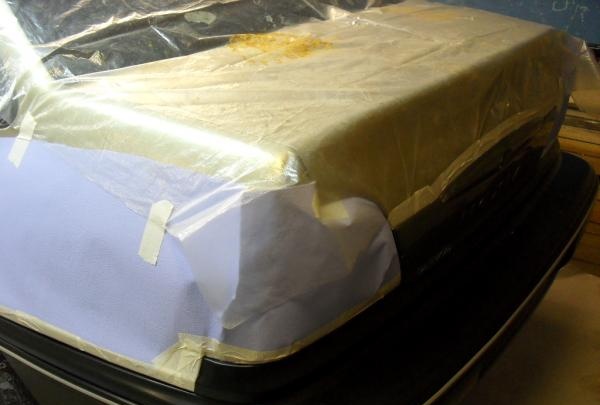
Stage two: painting the bumpers.
We degrease the surface of the bumpers with vodka.
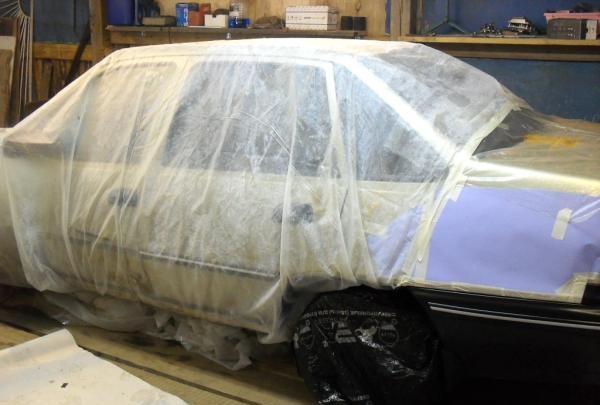
We select paint that is approximately similar, since choosing “the color for a foreigner” is an expensive pleasure.
Apply the first coat of paint, holding the can at a distance from the bumper. It is better to make the first press away from the surface to be coated, this will save you from spattering and the formation of stains. Without stopping spraying paint, we direct the stream to the bumper. We cover the entire surface of the rear bumper.
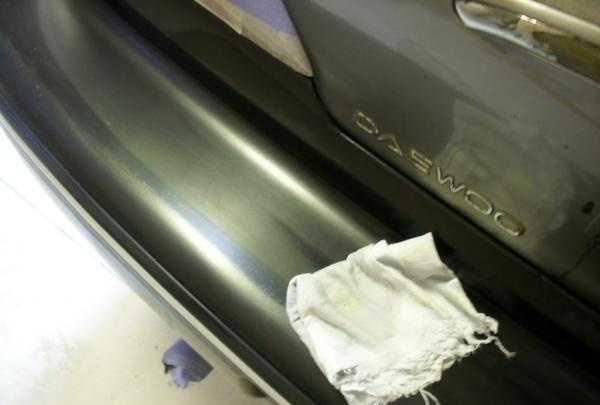
While the first layer is drying, apply paint to the front bumper. The time spent is enough to partially dry one layer. We return to the rear bumper and apply the second layer. We paint the front bumper the second time in the same way.
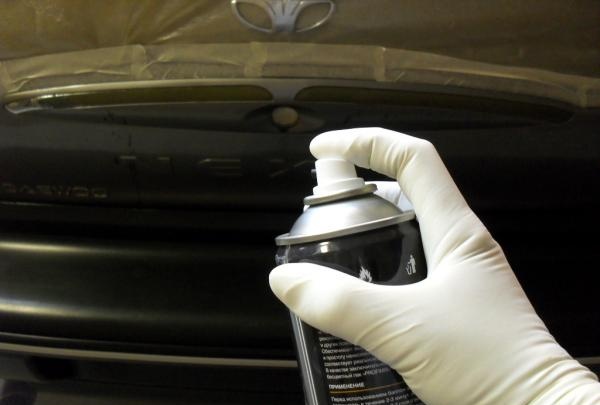
Dry for as long as indicated on the paint can. We do not carry out any other work at this time, so as not to pollute the painted surface.
We grind the dried surface with a special wheel on a drill. Very neat and careful! Otherwise, you can not only tear off the new layer of paint, but also rub through the hole. If your hand on the drill is not full, it is better to spend more time processing it manually with a terry towel.
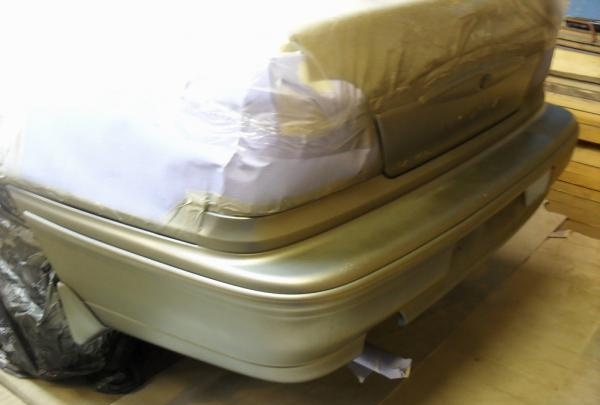
Wipe off the dust with a dry soft cloth and cover the bumpers with 2 layers of aerosol varnish.
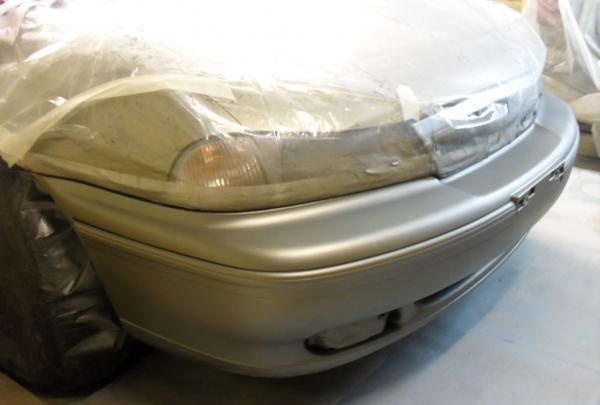

Third stage: straightening the dent.
To edit you will need a chamber and a compressor.
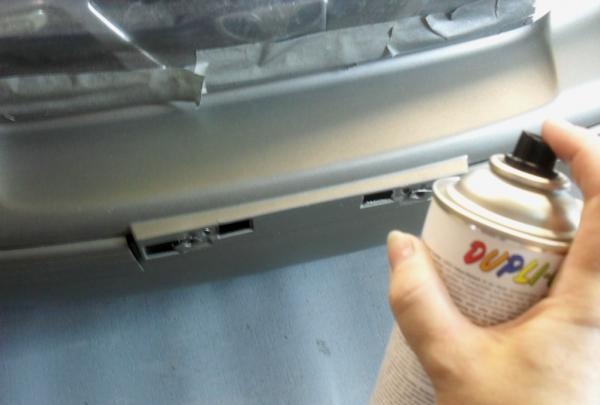
We disassemble the inside of the door with the dent.
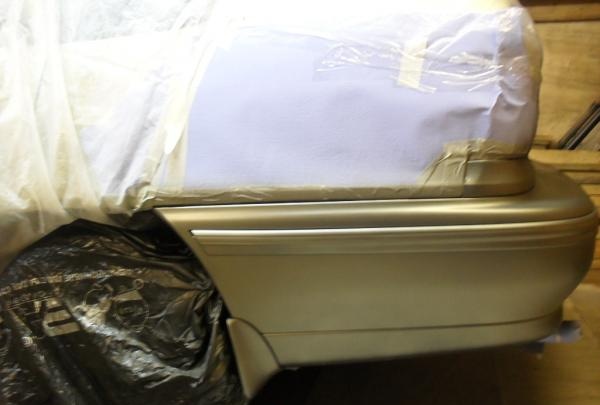
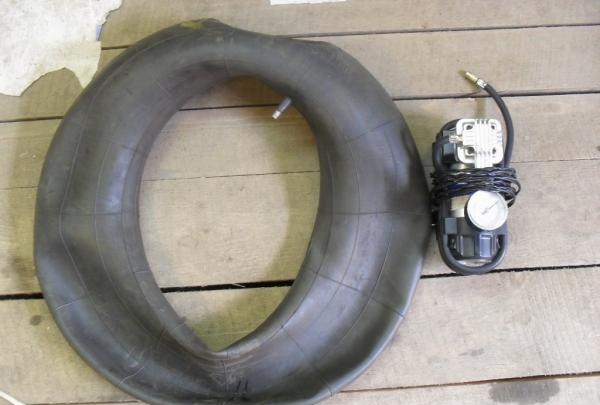
We insert the camera inside the door.
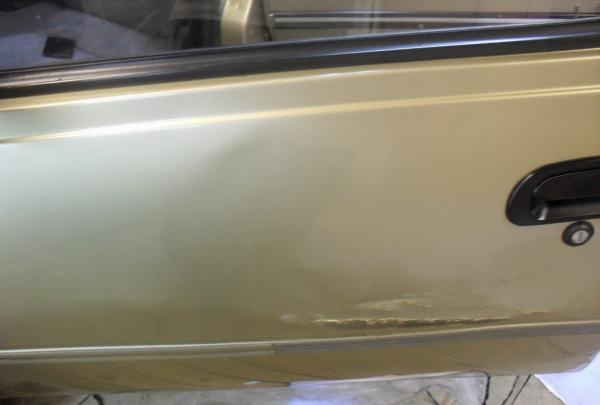
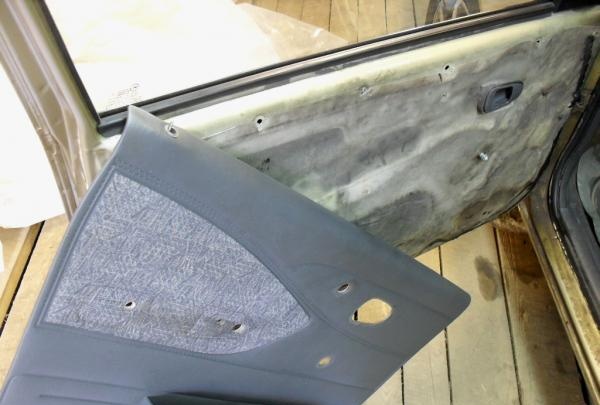
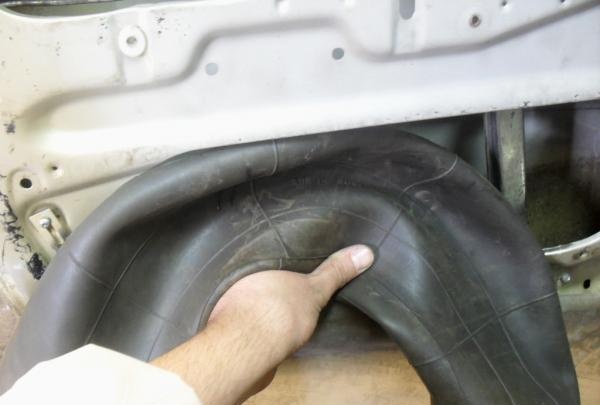
Turn on the compressor and inflate the chamber until the dent is straightened.
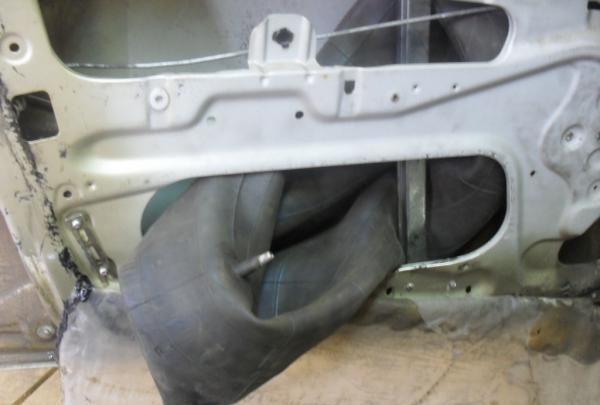
We will remove the camera only after preparing to paint the scratch.
Stage four: removing rust and scratches.
Clean the scratch on the door with sandpaper.
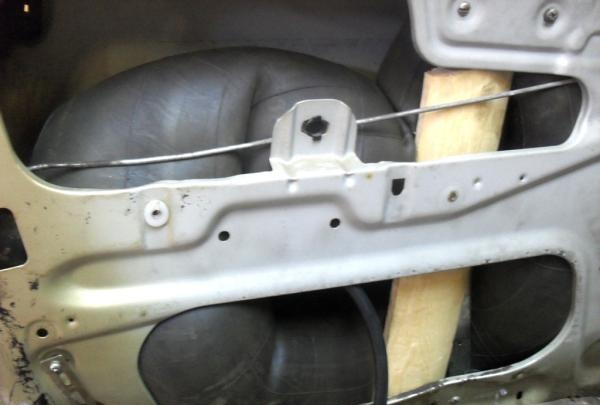
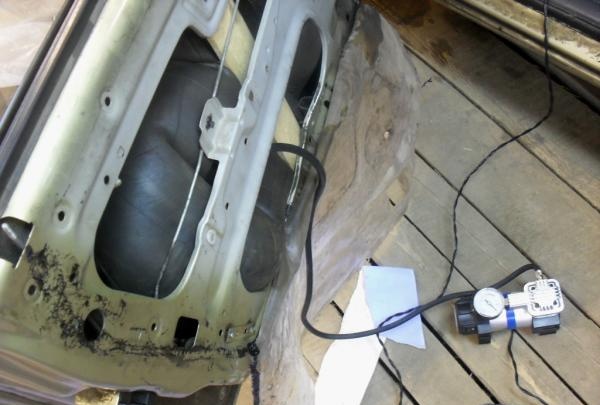
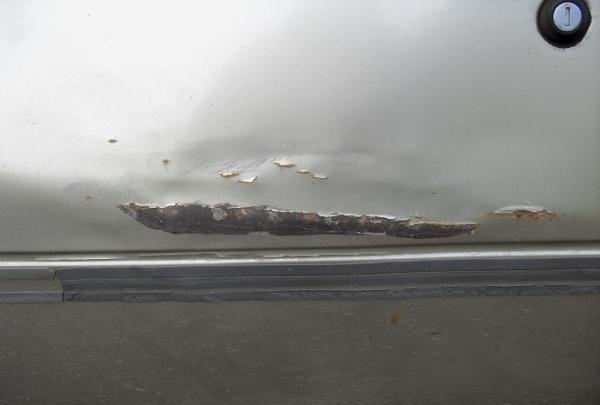
We apply a special putty and apply it to the scratches with a trowel.
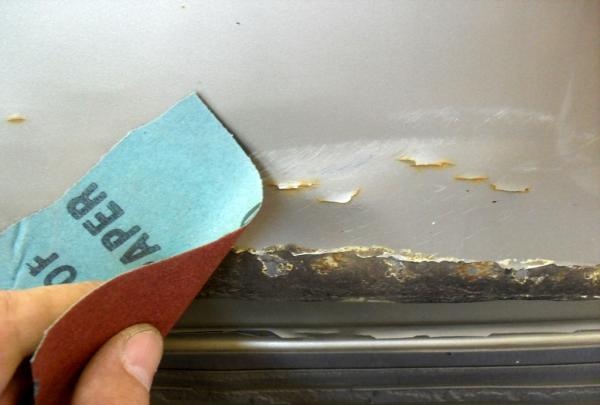
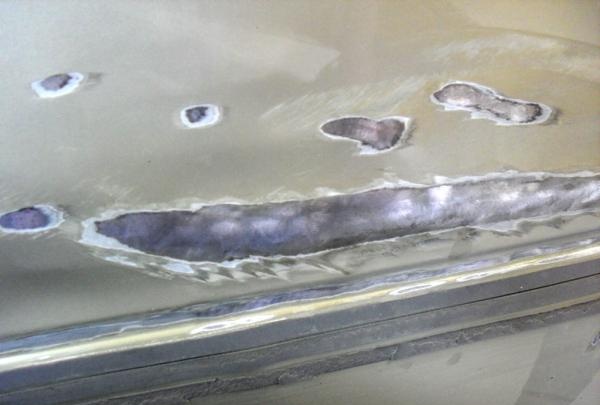
After drying, we smooth out the unevenness.
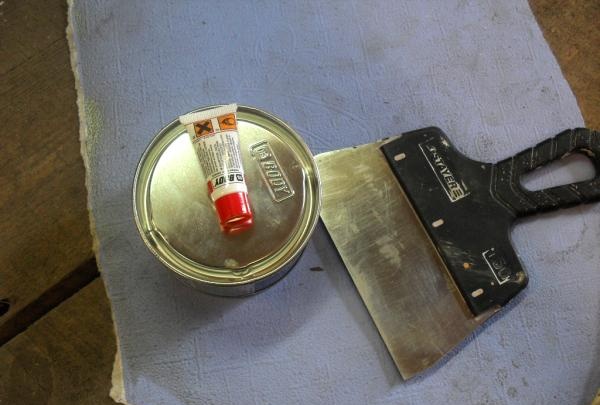
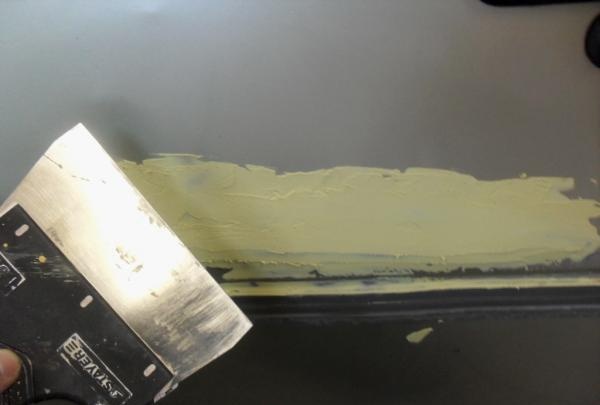
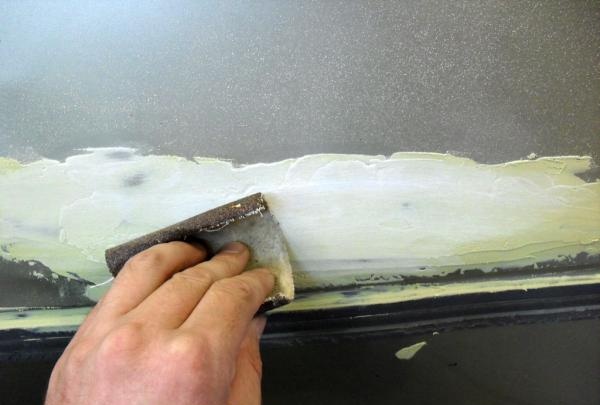
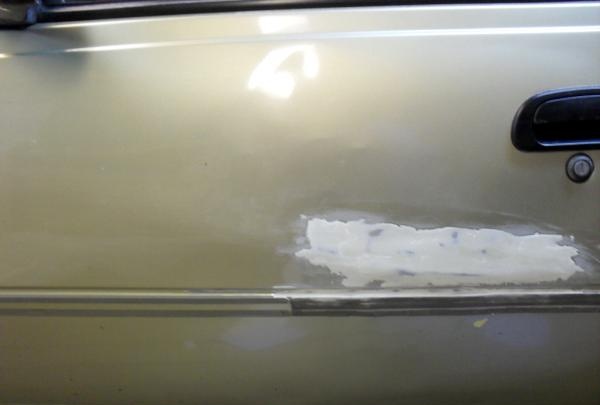
Fifth stage: making stencils for airbrushing.
Enlarge the image you like to the desired size. To do this, line the picture (preferably a two-color stencil) and cut it (in Word), copy each piece onto separate sheets, which we print on a printer and glue together manually.
Roll out the self-adhesive film to the length of the pattern and fold it right sides down.
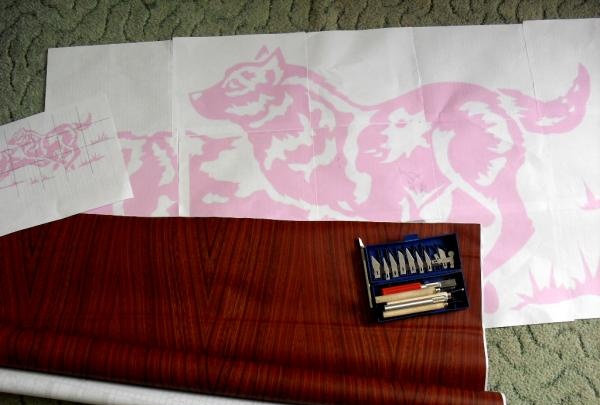
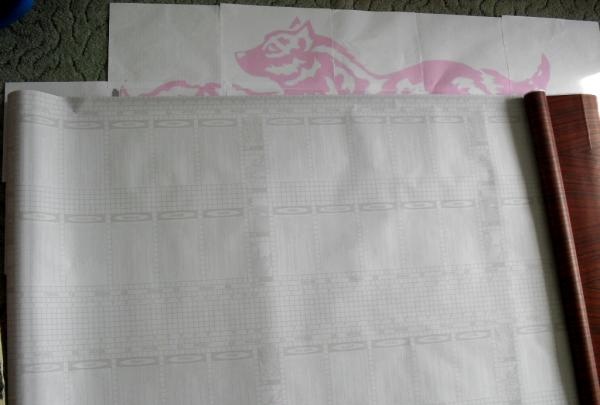
Let's get a sharp knife. It is better to purchase knives for cutting wood: various attachments and sharpness allow you to quickly and efficiently cut the most curved areas.
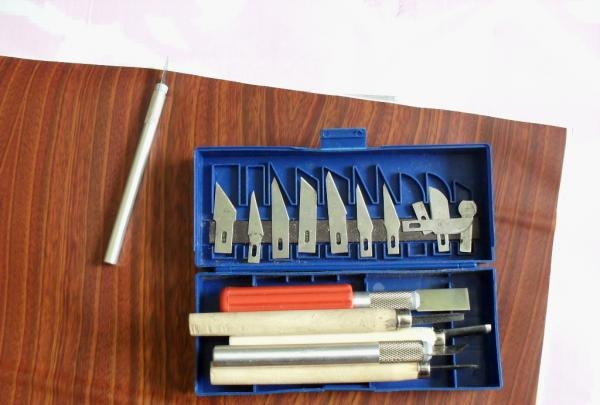
We place the enlarged pattern on top of the two layers of film and fasten all three layers with a stapler around the perimeter.
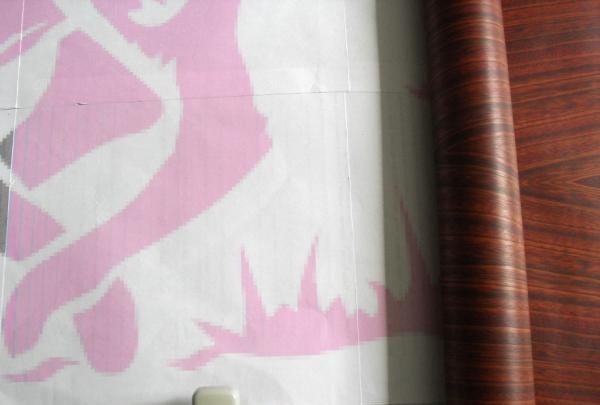
Carefully cut out the dark details of the picture.
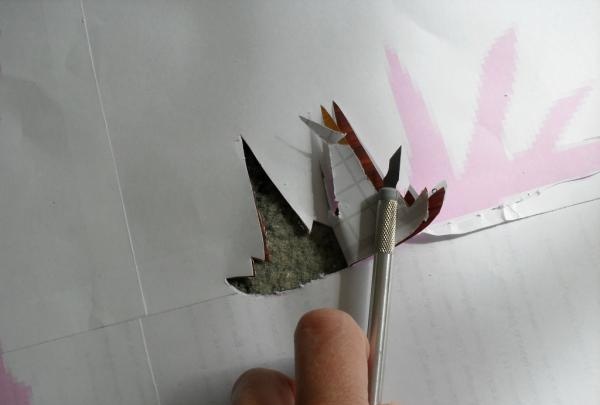
You get two identical stencils.
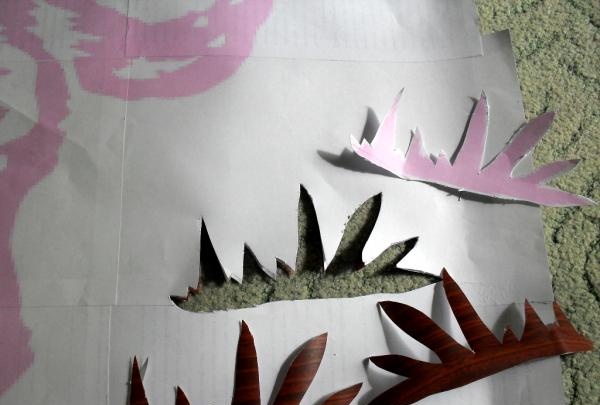
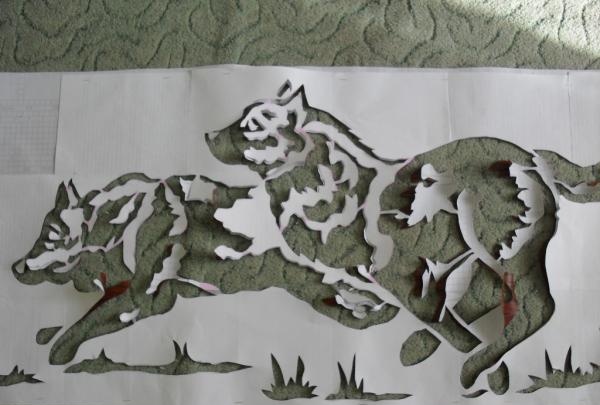
Stage six: attaching the stencil to the car.
We remove the staples and separate the stencils.
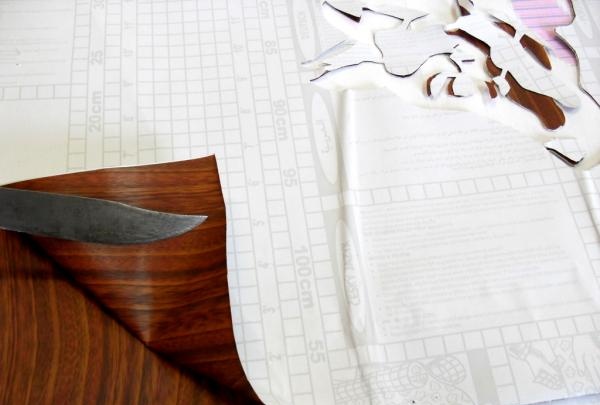
We degrease the places where the drawing is applied with vodka.
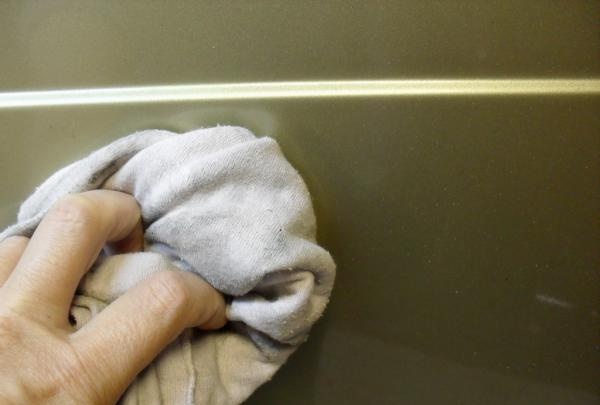
We attach the upper part of the stencil to the machine.
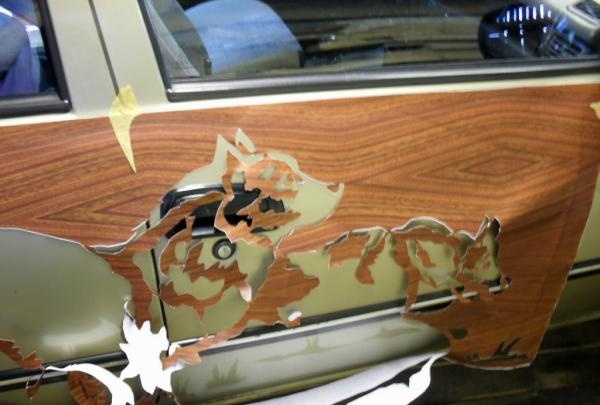
Carefully separate the protective layer from the film, smoothing the stencil over the surface of the machine.
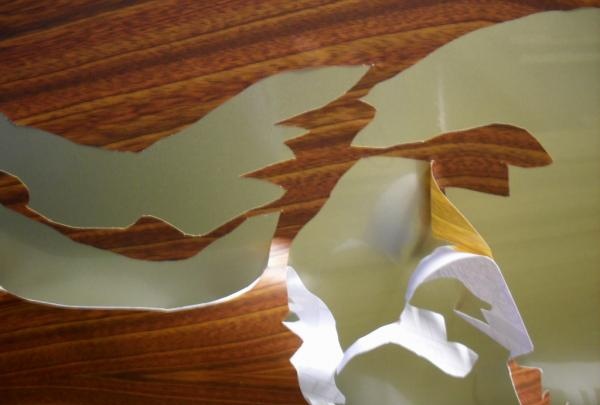
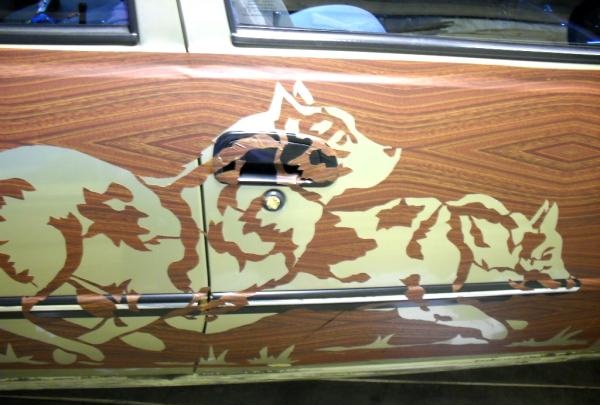
Carefully iron and knead the joints with three-dimensional parts so that the film lies on the surface (otherwise you will get blots).
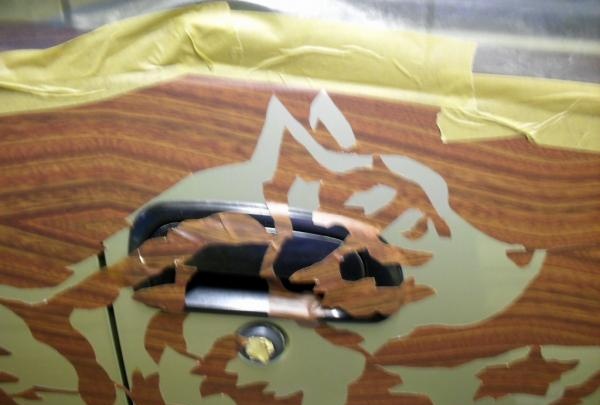
At the same time, you can update the mirrors by wrapping the unpainted part in bags.
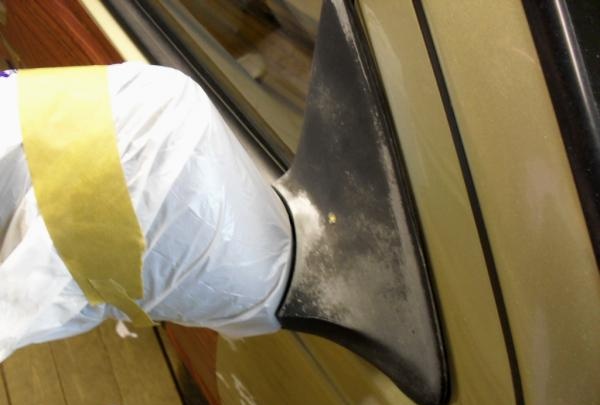
Seventh stage: drawing.
We mask all areas of the car that are not covered with a stencil with garbage bags or old wallpaper (we do not use newspapers, as their thin structure will get wet and the car will be painted over where the pattern is not needed).
Now boldly apply black aerosol paint in several layers (observe the drying time between layers, which is indicated on the can).
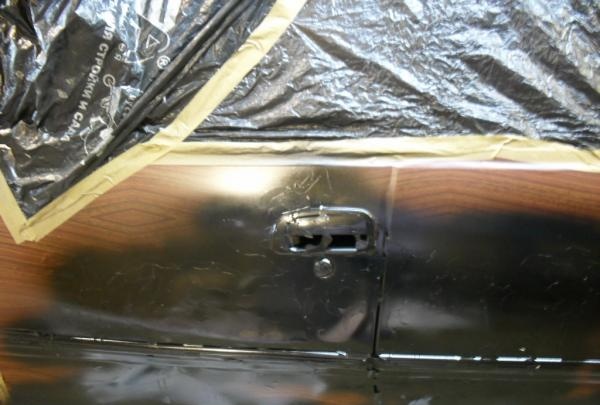
We paint the mirrors.
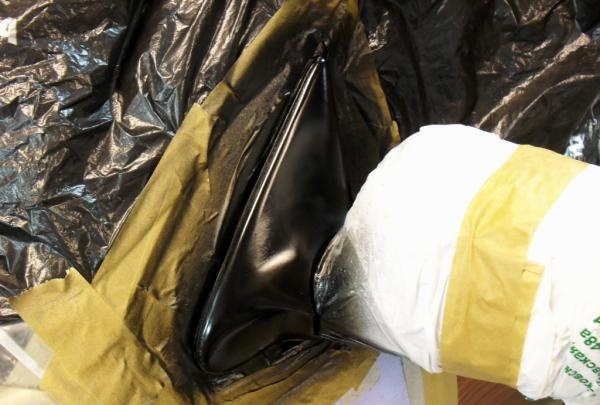
After drying, apply 2 layers of varnish.

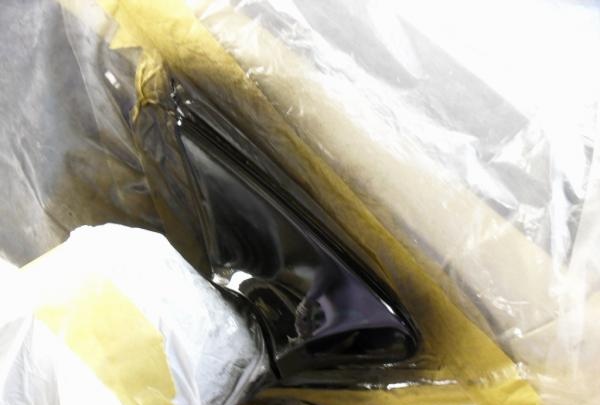
Carefully remove the stencil.
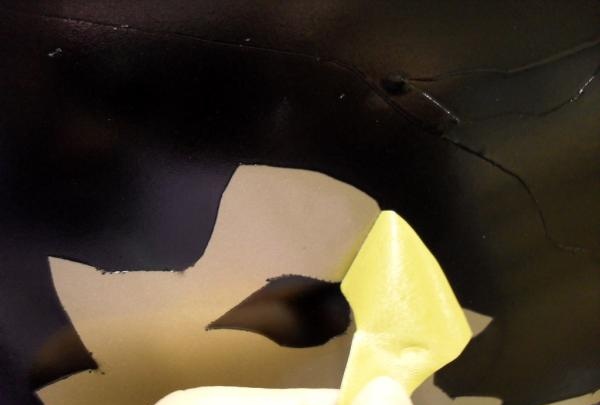
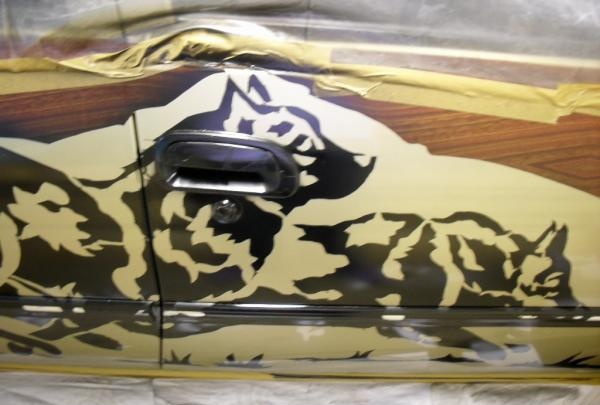
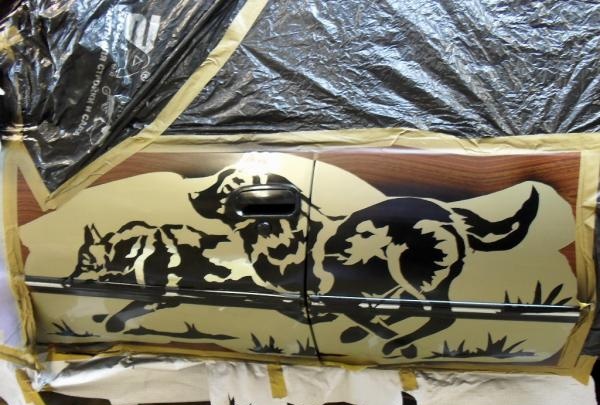
Use a solvent to wipe off the smudged pattern.
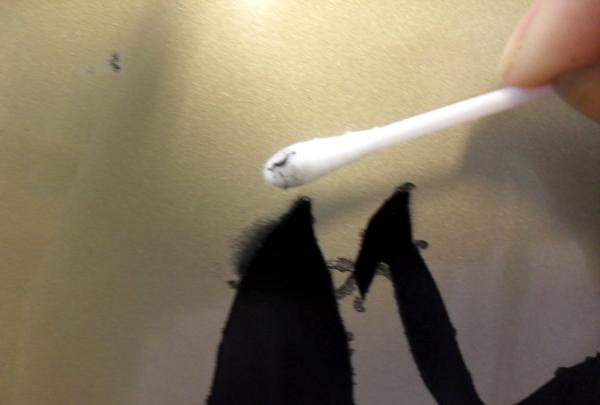
The filled areas of the scratch that were not covered with the stencil and design are painted over with a masking pencil (or liquid).
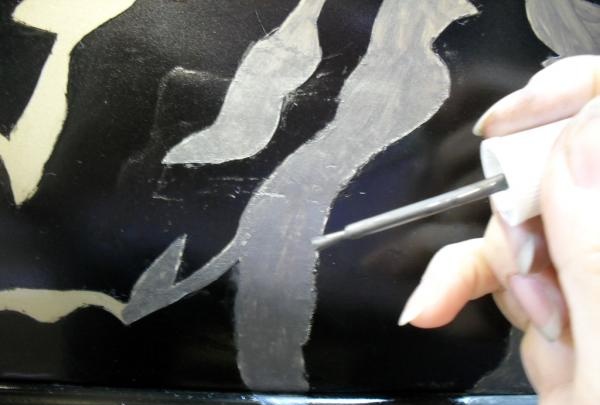
The car has almost passed the update stage.
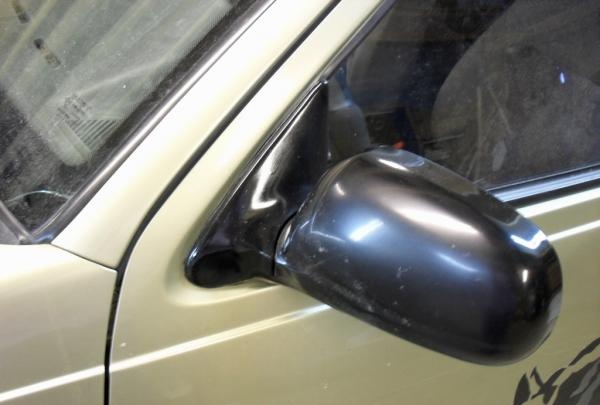
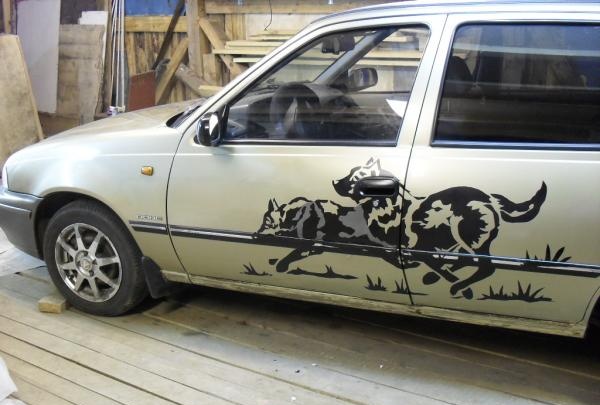
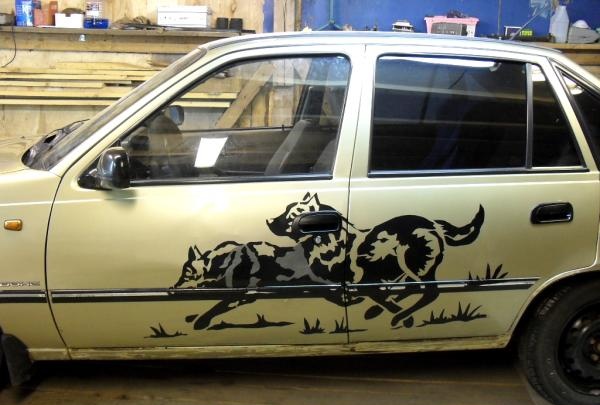
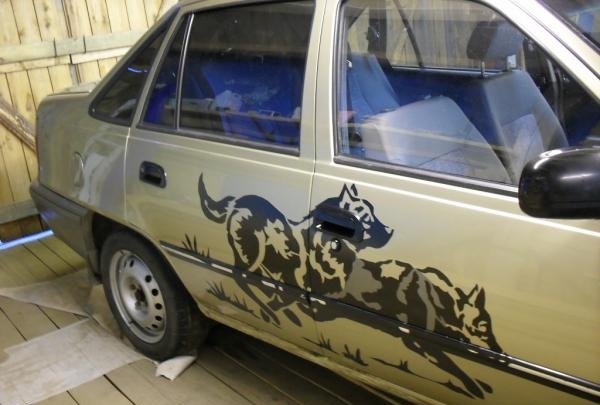
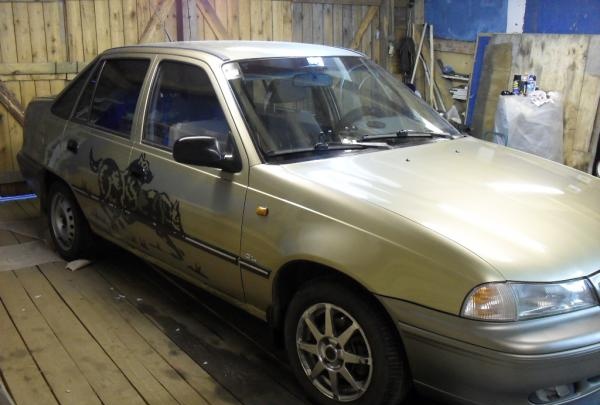
Eighth stage: cleaning and coating the thresholds.
We clean off rust on the thresholds with sandpaper.
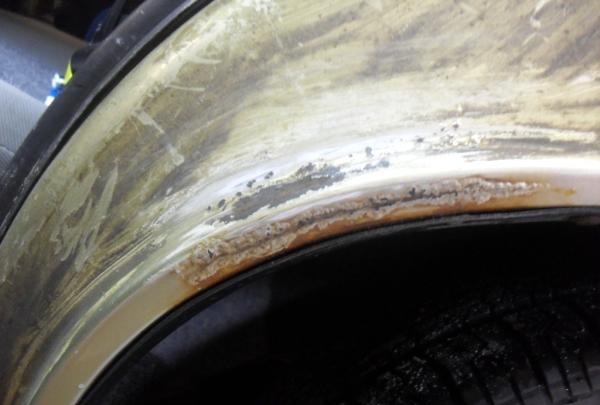
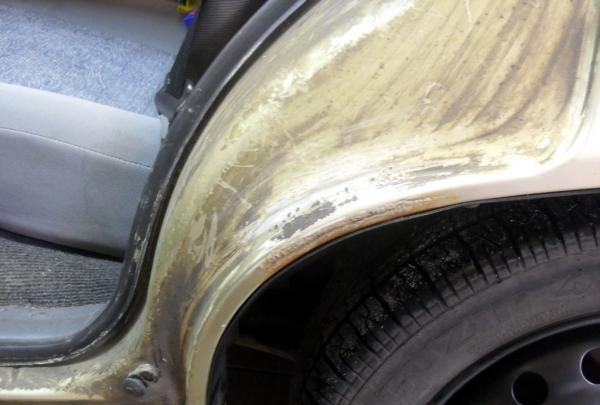
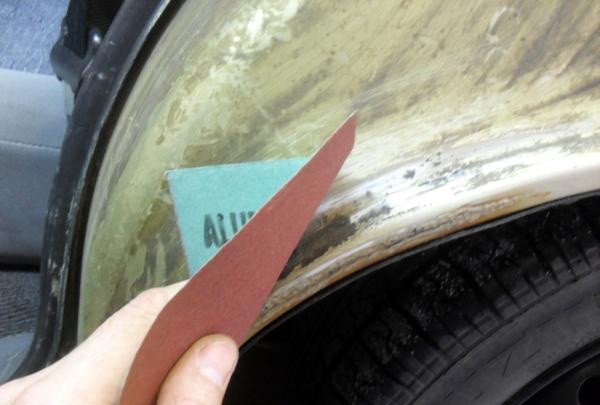
Use a grinder grinder to remove excess.
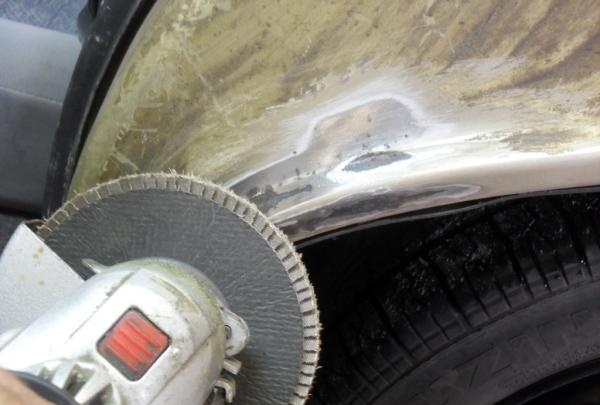
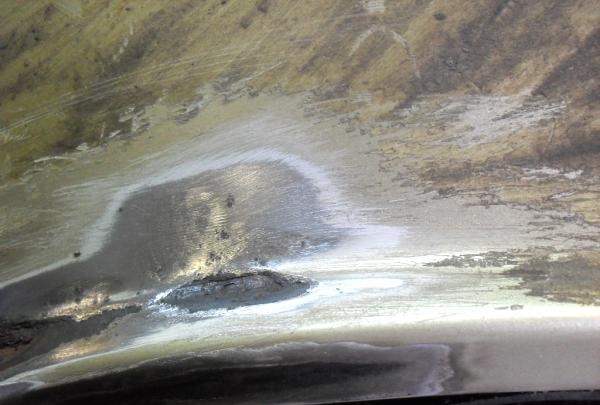
We apply putty. Let's dry it.
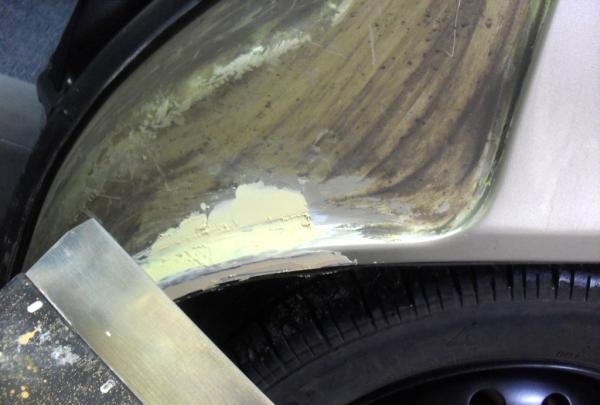
We clean out the irregularities.
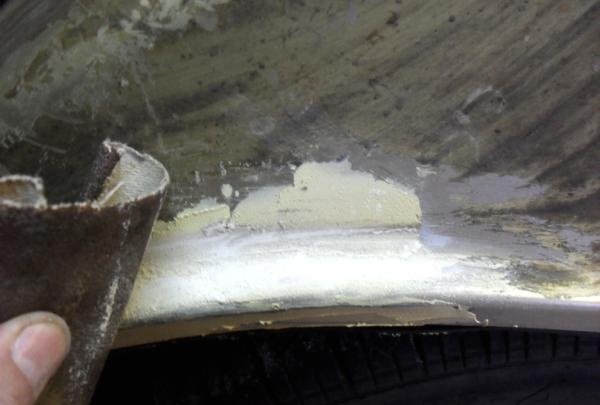
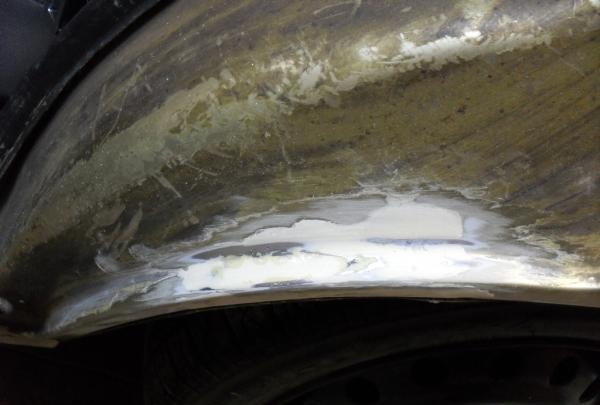
We close areas of the car that are not involved in the update process.
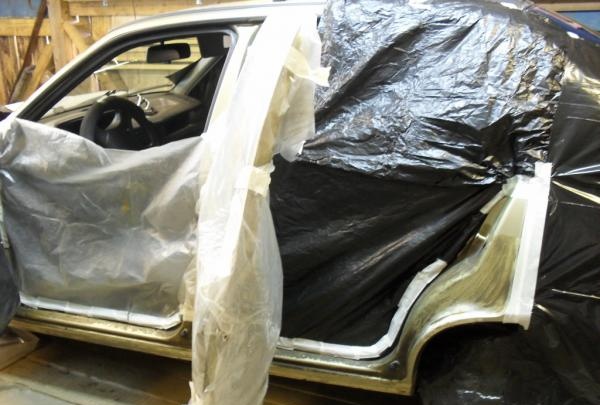
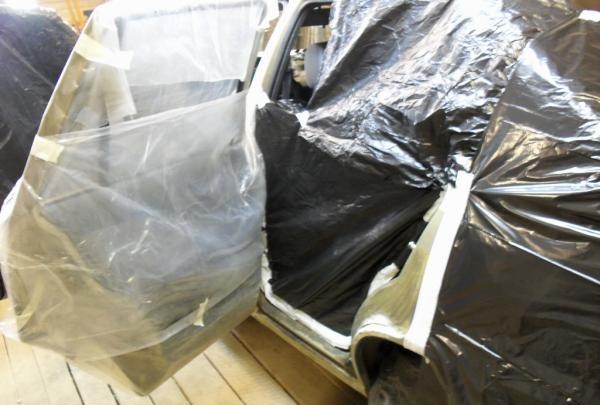
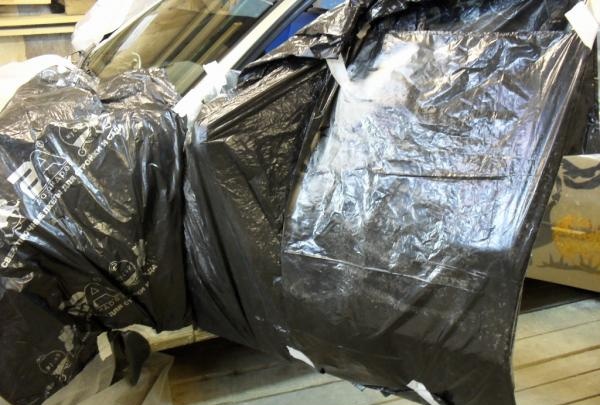

We degrease the areas ready for painting with vodka.
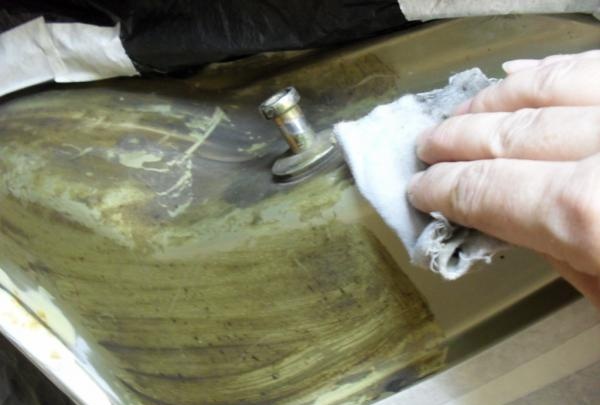
Apply liquid rubber in two layers.
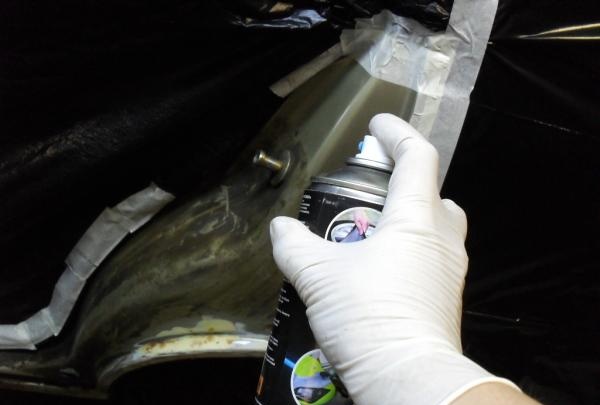
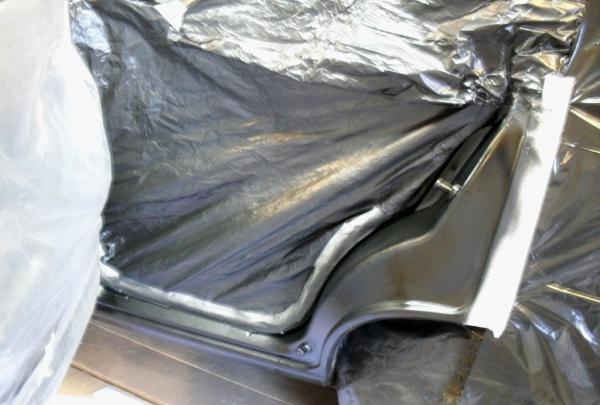
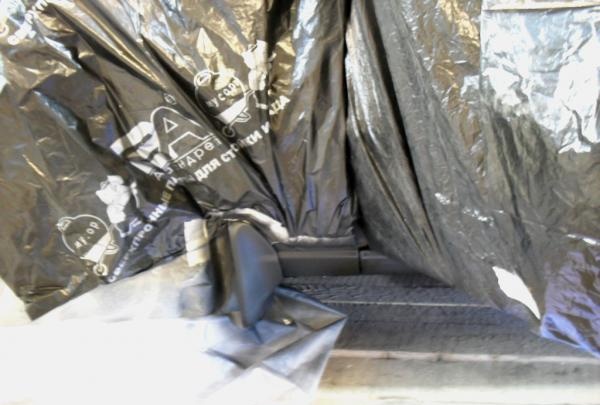
It should be noted that rubber applies better than paint. However, it is also easier to remove: just pick up the edge, pull, and the protective coating comes off like masking tape (quickly and without leaving any residue).
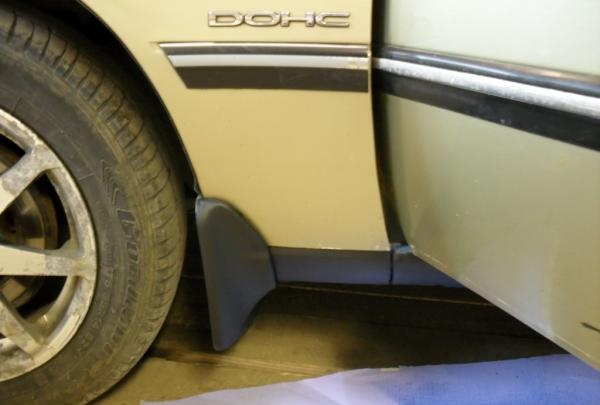
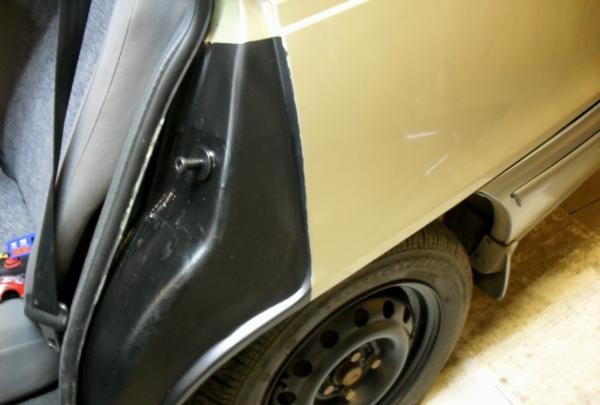

So, at home, for ridiculous money, you can update an old car so that it will attract more attention than it once did, being new and shiny.
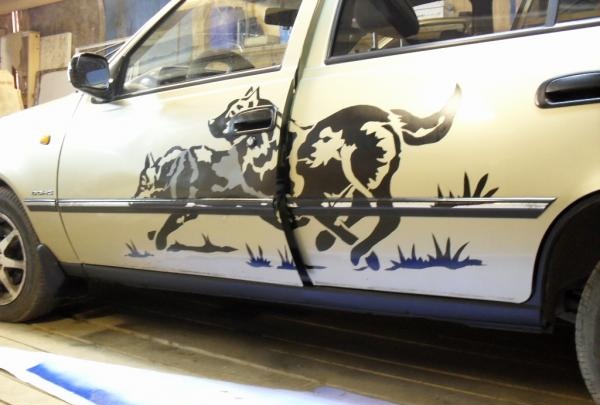
Materials for work:
- Gloves, mask, garbage bags, cotton swabs;
- Self-adhesive film – 3 m;
- Wood cutting knife or stationery knife – 1 pc.;
- Alcoholic drink “Vodka” – 1 bottle;
- Polishing wheel for drill – 1 pc.;
- Grinding wheel for grinder – 1 pc.;
- Trowel – 1 pc.;
- Fine sanding paper – 3-4 sheets;
- Painting tape – 2 pcs.;
- Aerosol paint for metal, black – 2 cans;
- Sand-colored aerosol paint for metal – 3 cans;
- Liquid rubber – 2 cylinders;
- Aerosol varnish – 1 large can;
- Metal putty – 1 can;
- Concealing pencil – 1 piece;
- Solvent – 1 bottle.
Stages of work:
First stage: preparing the car.
We rinse our favorite car with water. We apply the detergent thoroughly, wash it, dry it and put it indoors.



We rent rooms. We wrap all parts not involved in painting in protection. You can use anything, but the fastest and most convenient way is to attach garbage bags with masking tape: they are easy to attach and remove, and have a large coverage area.



Stage two: painting the bumpers.
We degrease the surface of the bumpers with vodka.

We select paint that is approximately similar, since choosing “the color for a foreigner” is an expensive pleasure.
Apply the first coat of paint, holding the can at a distance from the bumper. It is better to make the first press away from the surface to be coated, this will save you from spattering and the formation of stains. Without stopping spraying paint, we direct the stream to the bumper. We cover the entire surface of the rear bumper.

While the first layer is drying, apply paint to the front bumper. The time spent is enough to partially dry one layer. We return to the rear bumper and apply the second layer. We paint the front bumper the second time in the same way.

Dry for as long as indicated on the paint can. We do not carry out any other work at this time, so as not to pollute the painted surface.
We grind the dried surface with a special wheel on a drill. Very neat and careful! Otherwise, you can not only tear off the new layer of paint, but also rub through the hole. If your hand on the drill is not full, it is better to spend more time processing it manually with a terry towel.

Wipe off the dust with a dry soft cloth and cover the bumpers with 2 layers of aerosol varnish.


Third stage: straightening the dent.
To edit you will need a chamber and a compressor.

We disassemble the inside of the door with the dent.


We insert the camera inside the door.



Turn on the compressor and inflate the chamber until the dent is straightened.

We will remove the camera only after preparing to paint the scratch.
Stage four: removing rust and scratches.
Clean the scratch on the door with sandpaper.



We apply a special putty and apply it to the scratches with a trowel.


After drying, we smooth out the unevenness.




Fifth stage: making stencils for airbrushing.
Enlarge the image you like to the desired size. To do this, line the picture (preferably a two-color stencil) and cut it (in Word), copy each piece onto separate sheets, which we print on a printer and glue together manually.
Roll out the self-adhesive film to the length of the pattern and fold it right sides down.


Let's get a sharp knife. It is better to purchase knives for cutting wood: various attachments and sharpness allow you to quickly and efficiently cut the most curved areas.

We place the enlarged pattern on top of the two layers of film and fasten all three layers with a stapler around the perimeter.

Carefully cut out the dark details of the picture.

You get two identical stencils.


Stage six: attaching the stencil to the car.
We remove the staples and separate the stencils.

We degrease the places where the drawing is applied with vodka.

We attach the upper part of the stencil to the machine.

Carefully separate the protective layer from the film, smoothing the stencil over the surface of the machine.


Carefully iron and knead the joints with three-dimensional parts so that the film lies on the surface (otherwise you will get blots).

At the same time, you can update the mirrors by wrapping the unpainted part in bags.

Seventh stage: drawing.
We mask all areas of the car that are not covered with a stencil with garbage bags or old wallpaper (we do not use newspapers, as their thin structure will get wet and the car will be painted over where the pattern is not needed).
Now boldly apply black aerosol paint in several layers (observe the drying time between layers, which is indicated on the can).

We paint the mirrors.

After drying, apply 2 layers of varnish.


Carefully remove the stencil.



Use a solvent to wipe off the smudged pattern.

The filled areas of the scratch that were not covered with the stencil and design are painted over with a masking pencil (or liquid).

The car has almost passed the update stage.





Eighth stage: cleaning and coating the thresholds.
We clean off rust on the thresholds with sandpaper.



Use a grinder grinder to remove excess.


We apply putty. Let's dry it.

We clean out the irregularities.


We close areas of the car that are not involved in the update process.




We degrease the areas ready for painting with vodka.

Apply liquid rubber in two layers.



It should be noted that rubber applies better than paint. However, it is also easier to remove: just pick up the edge, pull, and the protective coating comes off like masking tape (quickly and without leaving any residue).



So, at home, for ridiculous money, you can update an old car so that it will attract more attention than it once did, being new and shiny.

Similar master classes
Particularly interesting
Comments (1)

